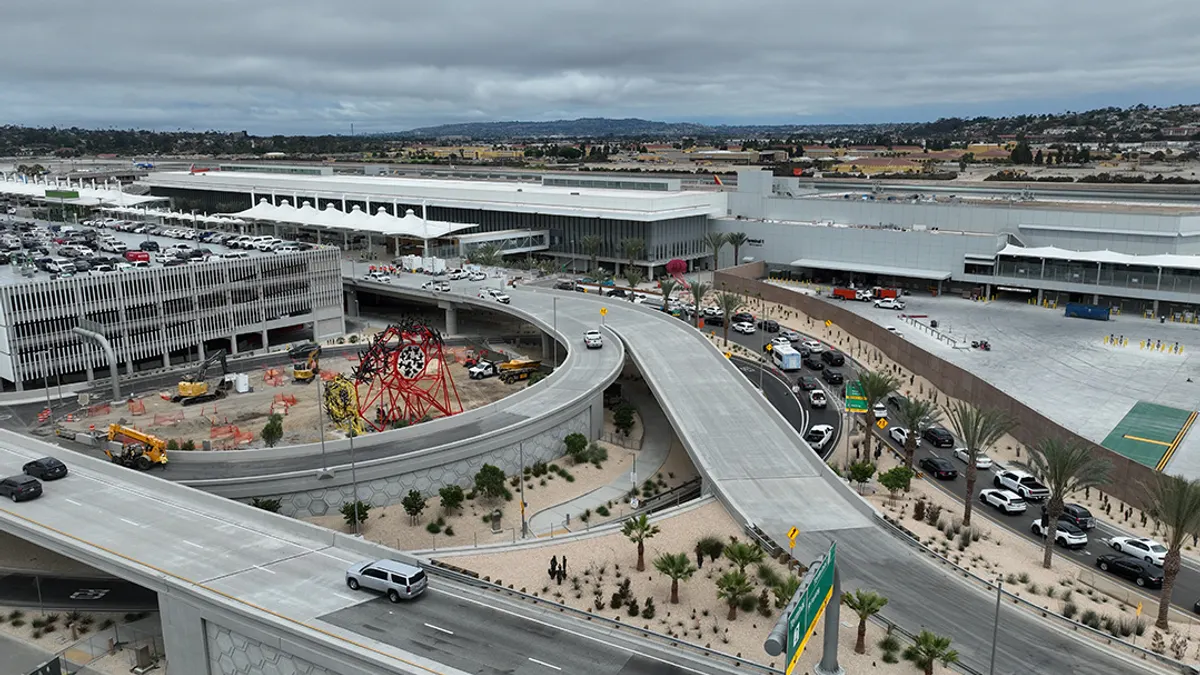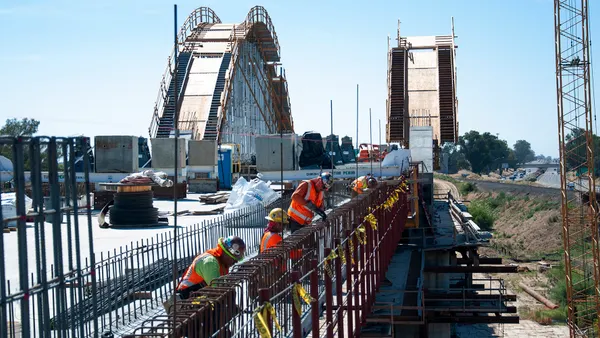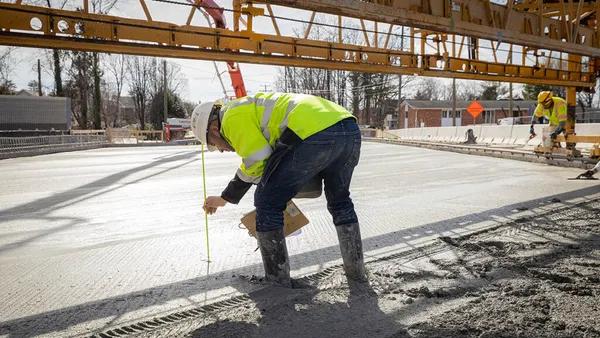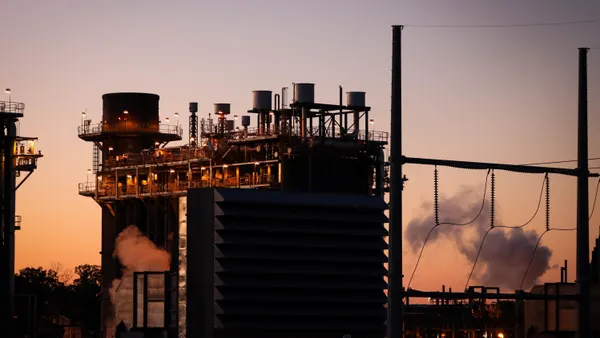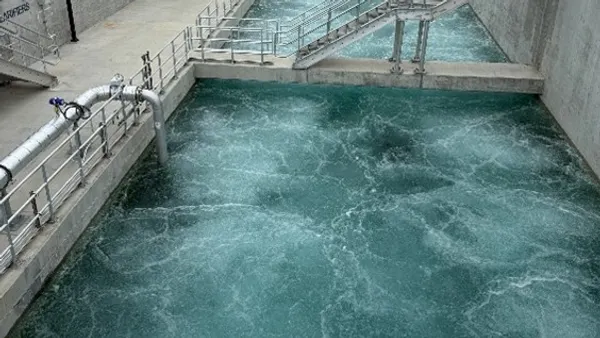Dive Brief:
-
After years of being corroded by salt, wind and fog, the Golden Gate Bridge's surface plates need to be replaced, according to Curbed San Francisco.
-
The iconic bridge span is coated with a zinc-based metal paint, in a color called international orange, which offers some corrosive protection but requires frequent repainting. The original paint job was lead-based. The bridge’s main cable has not been completely repainted since the 1930s.
- Certain areas of the superstructure are currently out of reach to painters who require upgraded safety equipment. The process of replacing the surface plates could take many years.
Dive Insight:
Even as transportation technologists deploy sensors to collect and analyze data on bridge-infrastructure health, rust and corrosion on the Golden Gate is worsening enough to be seen with the naked eye. The span’s position between the Presidio of San Francisco and the Marin Headlands just north of the city puts the superstructure within one of the most fog-dense microclimates in the Bay Area.
While budget funds were allocated in 2011 to repaint the span’s main suspension cables, painters were forced to postpone work when the safety cables running parallel to the suspension line were found to be deficient and necessitated repair.
Improvements in coating technology could result in a superior alternative to zinc-based paint. Already researchers have deployed chromium-doped aluminum oxide paint for enhanced reflectivity and thermal performance, and materials scientists at Princeton University are developing hydroxyapatite coatings based on human teeth and bones that can seal and protect concrete, stone and marble.



